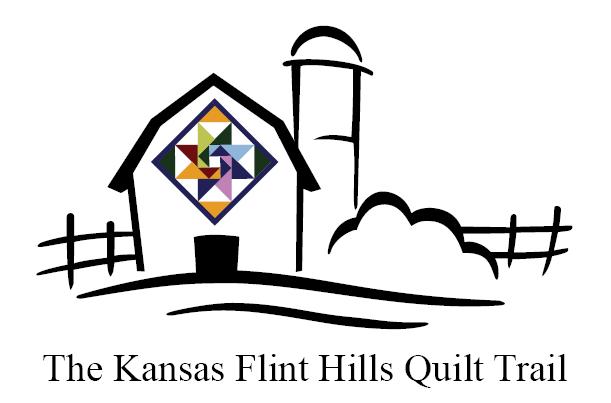“Quilts belong on beds, or across the lap when going for a sleigh ride on a snowy Christmas morning, perhaps around one’s legs while relaxing in the easy chair, or maybe just a pretty throw over the back of the divan.”
Well, at least that used to be the case with the beautiful, uniquely and meticulously quilted three-layered padded cloths sewn with precision stitches by grandmothers, their daughters and then even granddaughters. The “patchwork” top would typically be made of a series of “blocks” (all identical, or of diverse design), done sequentially, and then assembled.
In colonial days, quilting was frequently in front of the fireplace many times with scraps from worn clothing that had become unwearable, but still containing material that certainly couldn’t be thrown away; just how wasteful that would be?
Because each quilt was so different, and had been so gingerly created, sometimes even out of one’s own clothing pieces, each was often made for a specific recipient upon completion. Quilts would be passed from generation to generation remaining long after the quilter.
Despite modern ways, quilting remains a popular pastime for many women of all ages, and men alike, with stores merchandizing materials for the hobby, even sometimes professions, common in many communities.
Quilting bees usually a social event where people come together to quilt have again arisen in popularity, sometimes as competitions, but generally just for the fun of it.
Quilt shows often draw hundreds of entries from many states away, with both very old entries, and some made just days before, perhaps now with a sewing machine, but those hand-stitched with love generally always most appealing
Although there are patterns of all kinds, many are the brainchild of the quilter, and certainly different from another, while everyone gorgeous in its own distinctively colorful way.

So fascinating are these quilts to so very many today that they’re being duplicated as magnificent artwork on barns throughout the country.
But really, the history of the barn quilt begins about 300 years ago with the arrival of immigrants for religious freedom.
Barn decorating peaked in the early 20th century. There were many artists who specialized in bedecking barns. Today, quilt patterns as barn adornment have become popular again with more and more appearing throughout the Midwest.
Quilt trails have been developed in many states including Kansas. After a number of barn quilts have been displayed in an area, a map is developed that guides the viewers to the location.
“Barn quilts” can be put on any type of building, homes, garages, sheds or just mounted on two posts and displayed in the yard or at a park.
“Suzi Parron of the American Quilt Trail Movement is scheduled to visit Manhattan on Saturday, April 5,” according to Connie Larson, Manhattan, representing the Kansas Flint Hills Quilt Trail, sponsor of the author’s visit to the Flint Hills.

The book, “Barn Quilts And The American Quilt Trail Movement,” is Parron’s “tales of the trail” to the American Quilt Trail Movement, and will be available for sale and autographing at Scenic Valley Inn, 610 South Scenic Drive, just west of Manhattan, April 5, starting at 10 o’clock, with a lunch also planned.
“Suzi will take you on a journey along the American Quilt Trail Movement, with a presentation that is both informative and entertaining, exploring the way in which our quilting heritage takes on new meaning as this movement continues to expand,” Larson said.
Also, promoter of The American Quilt Trail on-line, Parron is expected to relate stories about some of the individuals who have painted quilt blocks to honor loved ones, or their local culture, along with humorous anecdotes.
Included additionally will be unveiling of a barn quilt that Scenic Valley Inn has commissioned Sue Hageman, 2013 AccuQuilt Barn Block Contest winner, to be the artist for their barn quilt block as a complement to the Kansas Flint Hills Quilt Trail.
Registration for activities at Scenic Valley Inn is required by calling 785-776-8829, or 800-759-0134, by March 28.
“Along with purchasing autographed books, those in attendance will have the opportunity to buy barn quilt calendars, and take home gifts donated from each of the 22 counties in the Kansas Flint Hills,” Larson noted..
A book signing for Parron has also been scheduled at the Flint Hills Discovery Center, 315 South Third Street, Manhattan, Saturday afternoon, April 5, from 2 to 4 p.m. No registration or admittance fee is required for that.

Parron is touring the Kansas Flint Hills Quilt Trail in early April researching the Flint Hills counties for her new book, tentatively titled: “Farther Along The Quilt Trail.”
“The Kansas Flint Hills Quilt Trail was formed to promote tourism and rural pride throughout the 22-county region, and is sponsored by the Kansas Flint Hills Tourism Coalition,” Larson explained.
Additional information on Parron’s visit to Manhattan, and the Kansas Flint Hills Quilt Trail, is available on Facebook, or at www.ksflinthillsquilttrail.com.
